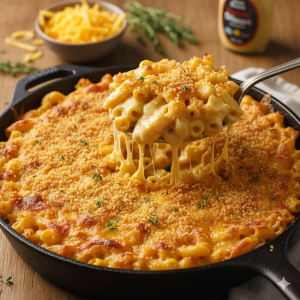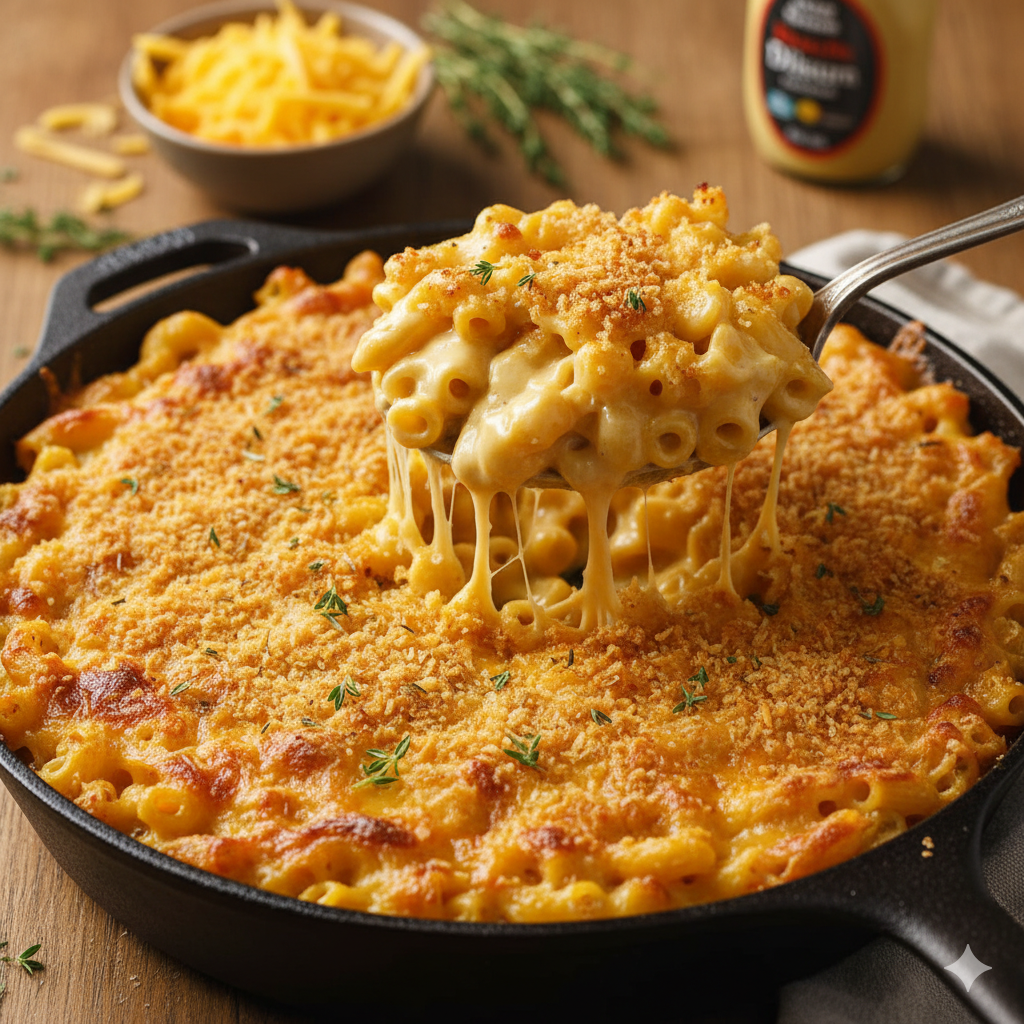Macaroni and cheese. Just the name conjures images of bubbling, golden perfection, a symphony of creamy sauce clinging to tender pasta, often crowned with a crispy, cheesy crust. It’s a dish that transcends mere sustenance; it’s a hug in a bowl, a nostalgic journey, and a testament to the comforting power of simple ingredients transformed into something extraordinary. This culinary icon, with its humble beginnings and global appeal, holds a special place in the hearts and on the tables of millions.
The origins of macaroni and cheese are a subject of delightful debate, with various cultures laying claim to its nascent form. Some food historians point to a medieval Italian cookbook, Liber de Coquina, which describes a dish of pasta and Parmesan cheese. Others look to 14th-century English recipes featuring pasta, butter, and cheese, often baked in a pie crust. However, the dish we recognize today, particularly in its rich, baked iteration, is often attributed to America. Thomas Jefferson, known for his culinary curiosity, encountered pasta and cheese dishes in France and Italy and is credited with bringing a pasta machine and a recipe for what he called “macaroni pie” back to Monticello in the late 18th century. His enslaved chef, James Hemings, adapted and prepared the dish, further solidifying its presence in American cuisine.
The true democratization of macaroni and cheese, however, came with the advent of packaged foods and industrialization. Kraft Foods introduced its boxed macaroni and cheese dinner in 1937, a convenient and affordable option during the Great Depression. This innovation, with its powdered cheese sauce and quick preparation, cemented mac and cheese as a staple in American households, particularly for busy families and those seeking a budget-friendly meal. While purists might scoff at the boxed version, its impact on the dish’s popularity and accessibility cannot be overstated.
Beyond its historical trajectory, the magic of macaroni and cheese lies in its endless adaptability. At its core, it’s a simple concept: cooked pasta mixed with a cheese sauce. But within this simplicity lies a universe of possibilities. The choice of pasta is crucial. Elbow macaroni is the classic, its small, curved shape perfect for trapping every drop of creamy sauce. However, cavatappi, shells, orecchiette, or even penne can offer different textures and visual appeals.
The heart of any great mac and cheese is, of course, the cheese sauce. A classic béchamel forms the foundation – a roux (butter and flour cooked together) slowly whisked with milk until thick and smooth. This neutral base provides the perfect canvas for the star of the show: the cheese. A blend of cheeses is often preferred to achieve a complex flavor profile and optimal melt. Sharp cheddar is almost always a given, providing a robust, tangy backbone. Gruyère adds a nutty, earthy depth, while Monterey Jack contributes a milder, creamier texture. For an extra kick, a touch of smoked gouda or a spicy pepper jack can elevate the dish to new heights. Some recipes even call for a spoonful of cream cheese for an ultra-creamy consistency or a dash of Dijon mustard for a subtle tang that brightens the overall flavor.
The method of preparation also offers variations. The stovetop method yields a gloriously gooey, saucy dish, perfect for immediate gratification. The baked version, often topped with breadcrumbs or extra cheese, develops a golden-brown crust that adds a delightful textural contrast to the tender pasta and creamy interior. This crust, often the first part to be devoured, is a coveted prize in any mac and cheese enthusiast’s bowl.
Beyond the basic recipe, mac and cheese serves as an excellent blank canvas for culinary creativity. It can be a sophisticated side dish, accompanying roasted meats or grilled vegetables. It can be transformed into a hearty main course with the addition of proteins like shredded chicken, crispy bacon, pulled pork, or even lobster. Vegetables like roasted broccoli, caramelized onions, or sautéed mushrooms can be folded in, adding flavor, texture, and a touch of virtuousness. Some daring chefs even experiment with truffle oil, herbs like thyme and rosemary, or a hint of smoked paprika to further enhance its complexity.
Macaroni and cheese has also become a beloved comfort food across cultures and generations. It evokes memories of childhood, family gatherings, and simple pleasures. It’s the dish you crave on a cold winter night, the ultimate pick-me-up after a long day, or the celebratory centerpiece at a casual get-together. Its universality lies in its ability to satisfy deep-seated desires for warmth, richness, and familiar flavors.
In recent years, mac and cheese has experienced a gourmet resurgence. Restaurants now feature elevated versions with artisanal cheeses, exotic additions, and sophisticated presentations. Food trucks specialize in creative mac and cheese bowls, pushing the boundaries of traditional recipes. From humble beginnings to a celebrated culinary star, macaroni and cheese continues to evolve, inspiring chefs and home cooks alike to experiment and innovate.
Ultimately, macaroni and cheese is more than just a dish; it’s a feeling. It’s the comforting embrace of creamy pasta, the satisfying pull of melted cheese, and the shared joy of a meal that speaks to the soul. Whether from a blue box or a gourmet kitchen, mac and cheese remains an enduring testament to the power of food to connect, comfort, and delight. It is, without a doubt, a culinary love story that will continue to be written, one cheesy bite at a time.

